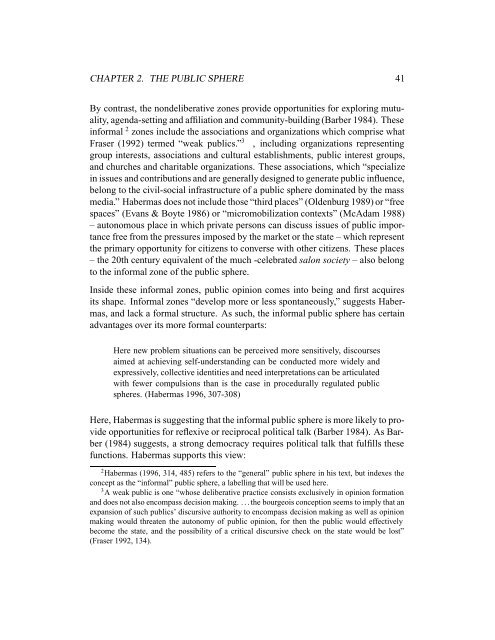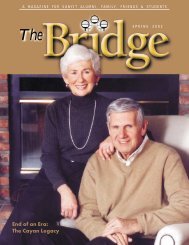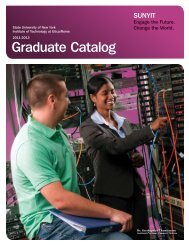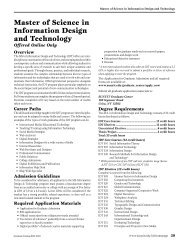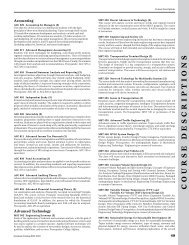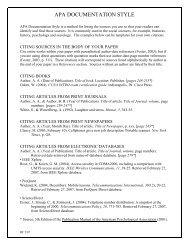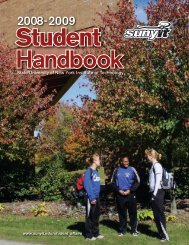Expanding the Public Sphere through Computer ... - ResearchGate
Expanding the Public Sphere through Computer ... - ResearchGate
Expanding the Public Sphere through Computer ... - ResearchGate
Create successful ePaper yourself
Turn your PDF publications into a flip-book with our unique Google optimized e-Paper software.
CHAPTER 2. THE PUBLIC SPHERE 41<br />
By contrast, <strong>the</strong> nondeliberative zones provide opportunities for exploring mutuality,<br />
agenda-setting and affiliation and community-building (Barber 1984). These<br />
informal 2 zones include <strong>the</strong> associations and organizations which comprise what<br />
Fraser (1992) termed “weak publics.” 3 , including organizations representing<br />
group interests, associations and cultural establishments, public interest groups,<br />
and churches and charitable organizations. These associations, which “specialize<br />
in issues and contributions and are generally designed to generate public influence,<br />
belong to <strong>the</strong> civil-social infrastructure of a public sphere dominated by <strong>the</strong> mass<br />
media.” Habermas does not include those “third places” (Oldenburg 1989) or “free<br />
spaces” (Evans & Boyte 1986) or “micromobilization contexts” (McAdam 1988)<br />
– autonomous place in which private persons can discuss issues of public importance<br />
free from <strong>the</strong> pressures imposed by <strong>the</strong> market or <strong>the</strong> state – which represent<br />
<strong>the</strong> primary opportunity for citizens to converse with o<strong>the</strong>r citizens. These places<br />
– <strong>the</strong> 20th century equivalent of <strong>the</strong> much -celebrated salon society – also belong<br />
to <strong>the</strong> informal zone of <strong>the</strong> public sphere.<br />
Inside <strong>the</strong>se informal zones, public opinion comes into being and first acquires<br />
its shape. Informal zones “develop more or less spontaneously,” suggests Habermas,<br />
and lack a formal structure. As such, <strong>the</strong> informal public sphere has certain<br />
advantages over its more formal counterparts:<br />
Here new problem situations can be perceived more sensitively, discourses<br />
aimed at achieving self-understanding can be conducted more widely and<br />
expressively, collective identities and need interpretations can be articulated<br />
with fewer compulsions than is <strong>the</strong> case in procedurally regulated public<br />
spheres. (Habermas 1996, 307-308)<br />
Here, Habermas is suggesting that <strong>the</strong> informal public sphere is more likely to provide<br />
opportunities for reflexive or reciprocal political talk (Barber 1984). As Barber<br />
(1984) suggests, a strong democracy requires political talk that fulfills <strong>the</strong>se<br />
functions. Habermas supports this view:<br />
2 Habermas (1996, 314, 485) refers to <strong>the</strong> “general” public sphere in his text, but indexes <strong>the</strong><br />
concept as <strong>the</strong> “informal” public sphere, a labelling that will be used here.<br />
3 A weak public is one “whose deliberative practice consists exclusively in opinion formation<br />
and does not also encompass decision making. . . . <strong>the</strong> bourgeois conception seems to imply that an<br />
expansion of such publics’ discursive authority to encompass decision making as well as opinion<br />
making would threaten <strong>the</strong> autonomy of public opinion, for <strong>the</strong>n <strong>the</strong> public would effectively<br />
become <strong>the</strong> state, and <strong>the</strong> possibility of a critical discursive check on <strong>the</strong> state would be lost”<br />
(Fraser 1992, 134).


